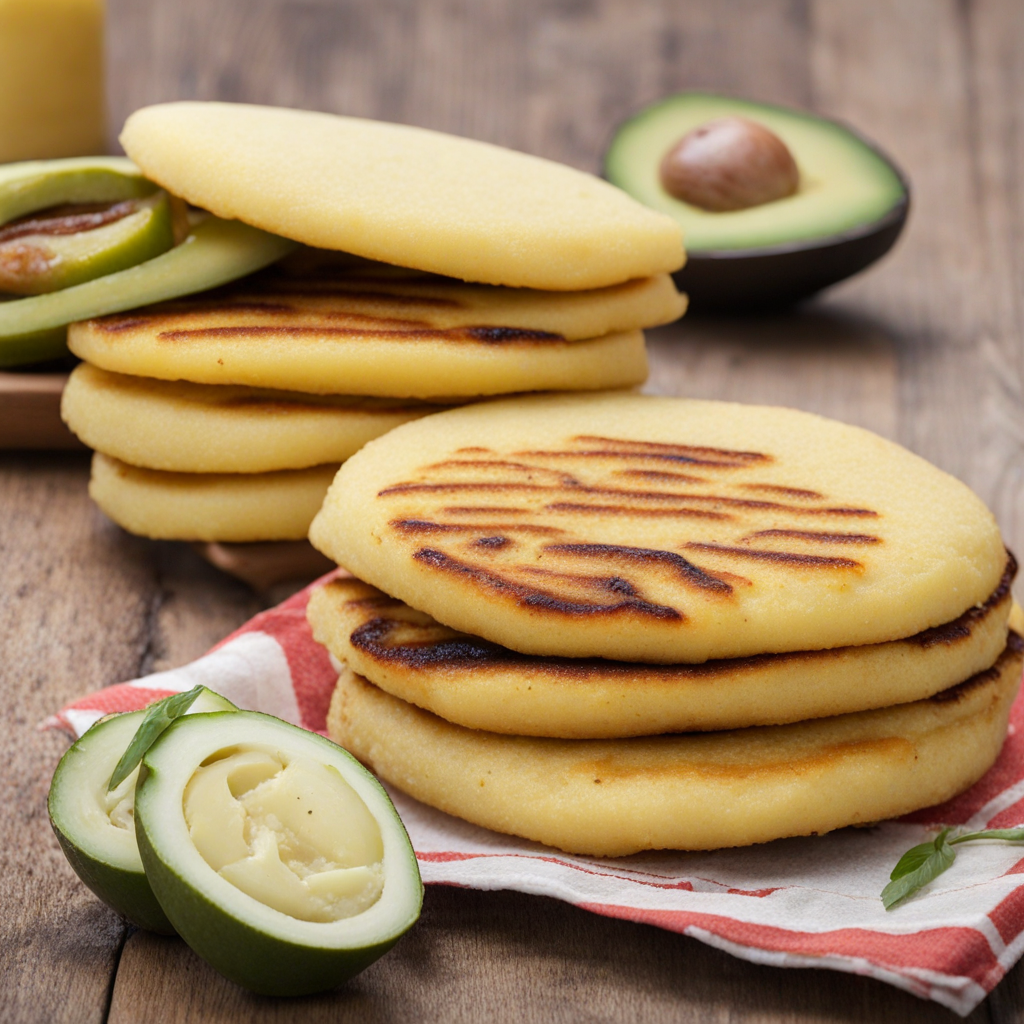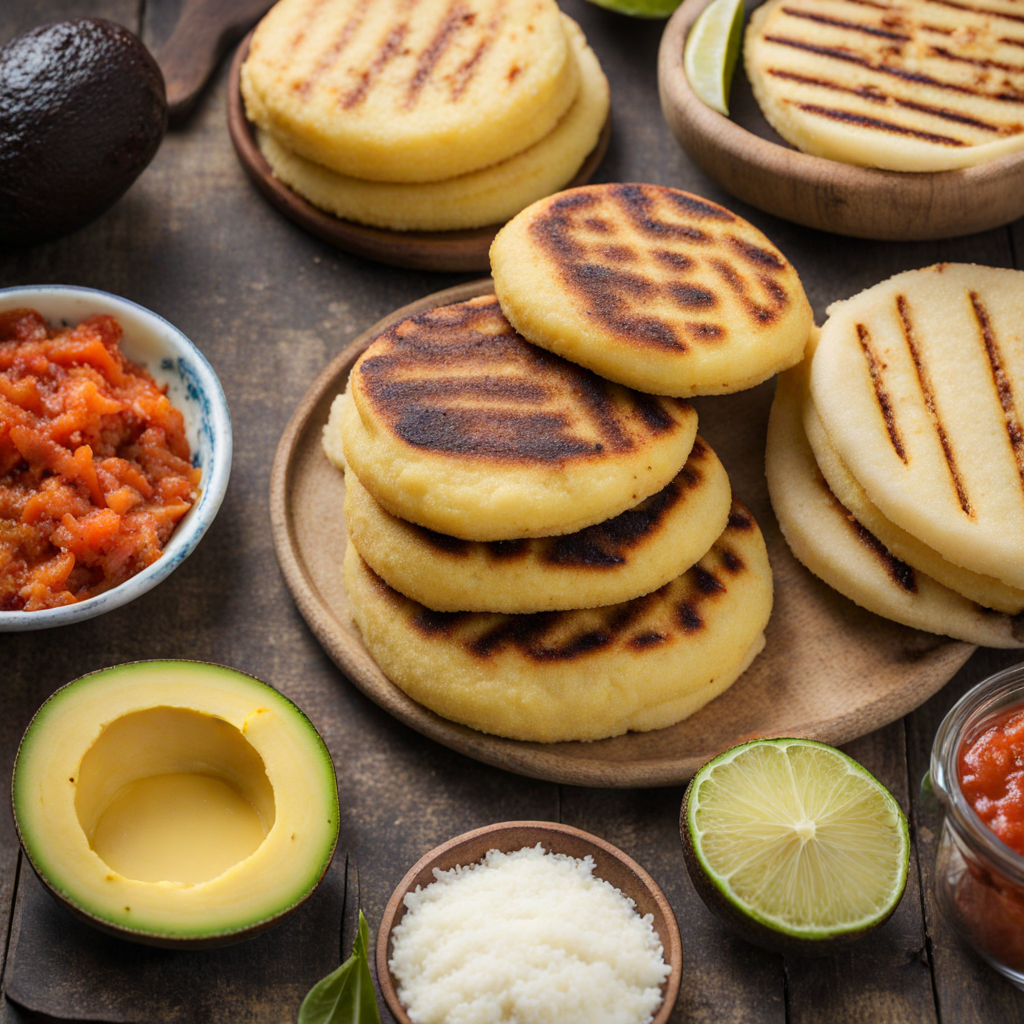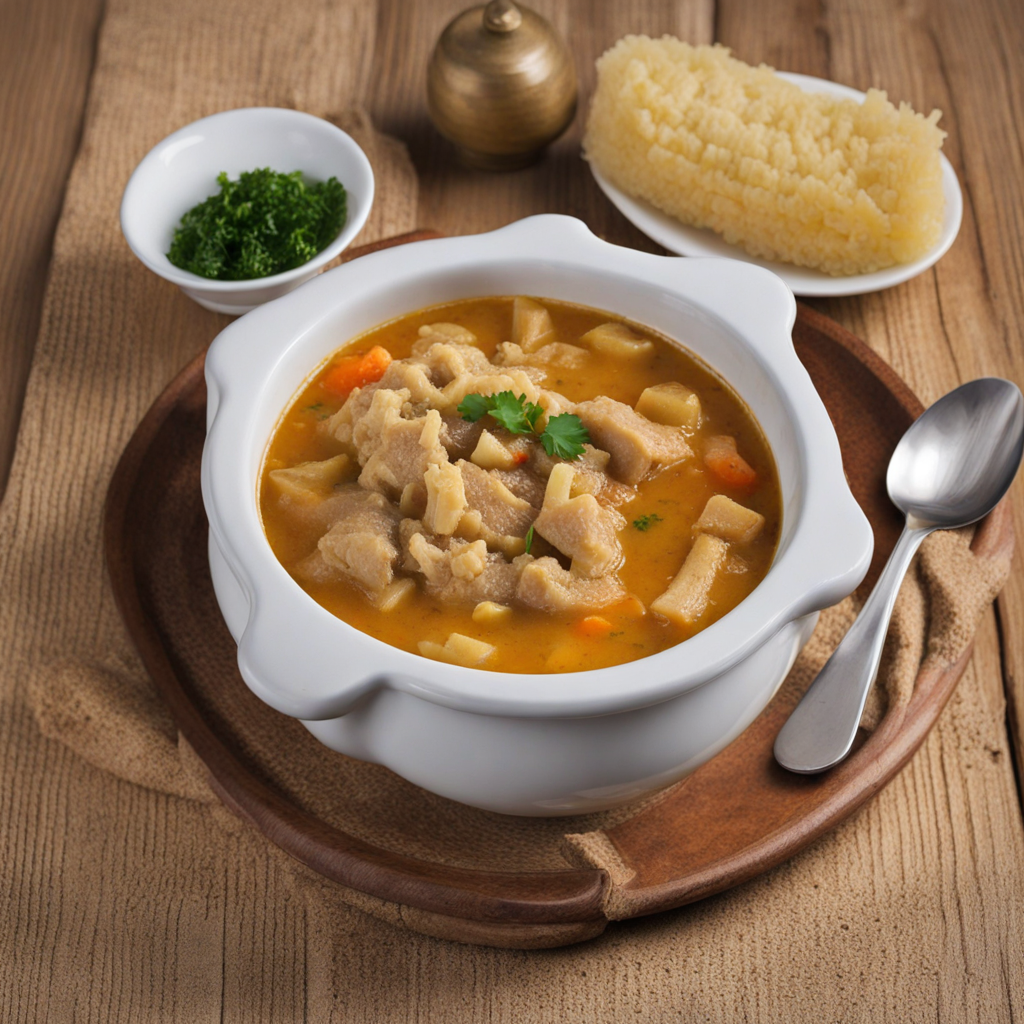Arepa
Arepas are a delightful culinary staple originating from Venezuela, made from ground maize dough that is both gluten-free and versatile. These round, flattened discs boast a crispy exterior and a soft, warm interior, making them an ideal canvas for a variety of fillings. Depending on the region and personal preference, arepas can be grilled, baked, or fried, creating different textures that enhance the overall eating experience. They are often enjoyed at any meal of the day, showcasing their adaptability in Venezuelan cuisine. What makes arepas truly exciting is the myriad of fillings that can be used to personalize each one. Common fillings include shredded beef, chicken, or pork, often accompanied by cheese, avocado, and a tangy sauce known as "salsa," which adds a burst of flavor. Vegetarian options are also abundant, with ingredients like black beans, plantains, or fresh vegetables providing a hearty and satisfying meal. Each bite offers a contrast of textures and flavors, from savory to creamy, leaving a lasting impression on the palate. Eating arepas is not just about flavor; it’s an experience rooted in Venezuelan culture. Traditionally, these delicious treats are shared among family and friends, often accompanied by social gatherings and celebrations. The process of preparing arepas can also be a communal activity, where everyone can get involved in shaping and filling them according to their tastes. Whether you enjoy them at a local restaurant or decide to make them at home, arepas promise to introduce you to a world of rich flavors and warm hospitality that is quintessentially Venezuelan.
How It Became This Dish
The Arepa: A Culinary Emblem of Venezuela The arepa, a round, flat cornmeal cake, is more than just a staple food in Venezuela; it is a cultural icon, a symbol of national identity, and a canvas for culinary creativity. The history of the arepa is rich and layered, tracing back to indigenous cultures and evolving through centuries of social and economic changes that shaped Venezuela’s diverse population. #### Origins: Indigenous Roots The origins of the arepa can be traced back to the indigenous peoples of what is now Venezuela and Colombia. Historians believe that the word "arepa" comes from the indigenous term "erepa," which refers to corn. Corn, or maize, was a fundamental crop for these communities, serving as a primary source of sustenance. Archaeological evidence suggests that the use of corn dates back over 3,000 years in this region, making it a staple well before European colonization. Indigenous tribes such as the Timoto-Cuicas and the Arawaks prepared corn in various forms, grinding it into a dough that could be shaped into patties and cooked over an open flame or on hot stones. These early versions of the arepa were often filled or topped with local ingredients such as cheese, meats, or vegetables, showcasing the resourcefulness and culinary traditions of these communities. #### Colonial Influence and Evolution The arrival of Spanish colonizers in the 16th century brought about significant changes to indigenous foodways. The introduction of new ingredients, such as beef, pork, and various spices, influenced the way arepas were prepared and consumed. The combination of European and indigenous culinary practices led to the diversification of the arepa, giving rise to a variety of fillings and styles that reflected the changing cultural landscape. By the 19th century, the arepa had become firmly entrenched in Venezuelan society. It was not limited to indigenous populations but had spread throughout the country, becoming a beloved dish among all social classes. The arepa was practical; it could be easily carried and consumed on the go, making it a favored food for workers and travelers alike. #### Cultural Significance The arepa is not just a culinary delight; it is a vessel of cultural expression and pride. In Venezuela, the arepa transcends its role as mere sustenance; it embodies the spirit of the nation. Each region in Venezuela has its own unique take on the arepa, showcasing the country’s rich biodiversity and culinary heritage. For example: - Arepa Reina Pepiada: Originating from Caracas, this arepa is filled with a creamy chicken salad made with avocado and mayonnaise. It is a favorite among locals and visitors alike, representing the fusion of traditional and modern culinary influences. - Arepa de Pabellón: This version is filled with the classic Venezuelan dish of "pabellón criollo," which consists of shredded beef, black beans, and fried plantains. This arepa is a celebration of the country’s flavors and culinary history. - Arepa de Choclo: In regions where sweet corn is abundant, this variation is made from fresh corn, offering a sweeter taste and denser texture, often enjoyed with cheese. The arepa’s versatility allows it to adapt to local tastes and available ingredients, making it a beloved dish across various demographics, from urban centers to rural areas. #### The Arepa in Modern Venezuela As Venezuela entered the 20th century, the arepa continued to adapt to the changing social and economic landscape. The rise of urbanization saw the emergence of areperas—specialty restaurants that focus primarily on preparing and selling arepas. These establishments became popular gathering spots, where families and friends would come together to enjoy the diverse offerings of this beloved dish. However, the late 20th and early 21st centuries brought about significant challenges for Venezuela, including political turmoil, economic instability, and hyperinflation. These factors have greatly impacted food availability and access, yet the arepa remains a symbol of resilience and resourcefulness. Venezuelans have continued to innovate, finding creative ways to fill their arepas with limited resources, often using whatever ingredients are available. #### Arepas Beyond Venezuela In recent years, the arepa has gained international recognition, finding its way to the menus of restaurants around the world. As the Venezuelan diaspora has expanded due to economic and political challenges, so too has the global appreciation for this traditional dish. Arepa food trucks and restaurants have sprung up in cities from Miami to Madrid, allowing people of diverse backgrounds to experience the unique flavors of Venezuela. In the United States, the arepa has become a popular gluten-free option, appealing to health-conscious consumers. Chefs have experimented with the traditional fillings, incorporating international flavors and techniques, while still paying homage to the arepa’s roots. This blending of culinary traditions reflects the arepa’s ability to adapt and thrive in different cultural contexts. #### Conclusion: The Arepa as a Cultural Legacy Today, the arepa stands as a powerful symbol of Venezuelan identity, embodying the rich history and cultural diversity of the nation. It is a dish that tells the story of resilience, adaptation, and innovation in the face of adversity. As Venezuelans continue to navigate the complexities of their reality, the arepa remains a comforting and unifying force—a reminder of home, heritage, and the enduring spirit of a people. The arepa’s journey from indigenous origins to a global culinary phenomenon illustrates the power of food to connect cultures, tell stories, and foster a sense of belonging. Whether filled with traditional ingredients or modern interpretations, the arepa will undoubtedly continue to evolve, remaining a cherished part of Venezuela’s culinary legacy for generations to come.
You may like
Discover local flavors from Venezuela







